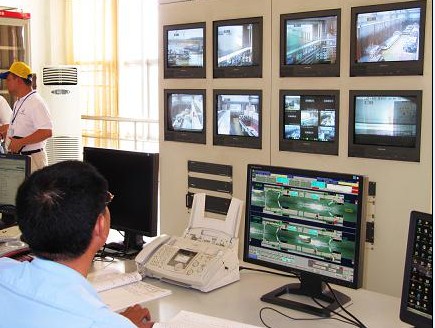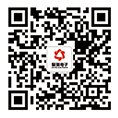Intelligent water conservancy remote monitoring system is a real-time, accurate and efficient information management system established by effectively integrating advanced GSM short message, GPRS, GIS, electronic control technology and computer processing technology into water conservancy remote monitoring. The flow monitoring adopts the integrated wireless intelligent magnetostrictive water level flowmeter or ultrasonic flowmeter system with four integrated functions of "measurement (measurement), acquisition (acquisition), transmission (GPRS wireless transmission) and electricity (with battery). The equipment can not only accurately measure the real-time water level and flow of the measuring weir, but also maintain the operation of very low power consumption. At the same time, it can be transmitted to the irrigation area information center in real time through GSM / GPRS network. The working mode of the equipment is self recording collection: after automatically collecting the water level data according to the set time period, the instantaneous flow and cumulative flow data are calculated and saved in the memory, and can be automatically reported through SMS.

1、 Design principles
The technical implementation scheme of intelligent water conservancy remote monitoring system must follow the following principles:
1. Reliability
The system must have a stable and reliable operation system. The backup and disaster recovery system shall be fully considered in the design, so that the whole system can still provide customer service in case of failure, and can quickly eliminate the failure and operate normally.
2. Expansibility and openness
The system with strong expansibility and least waste in capacity expansion and upgrading shall be designed according to the most economical principle. The system design follows the principle of openness and can support a variety of hardware devices and networks
System, software and hardware support secondary development. The network system, database system and communication hub adopt standard data interface and have the ability of data exchange and data sharing with other information systems. The computer network system is suitable for wide area expansion in the future.
3. Safety and maintainability
The system must attach great importance to the security of data, and take preventive measures to prevent hackers from invading. In addition, the authority control of internal employees and scheduling customers should also be strengthened to prevent users from operating data beyond their authority. Provide automatic fault alarm detection and
Some degree of automatic recovery.
4. Real time and parallelism
Considering the number of water conservancy remote monitoring points, the system should adopt the network design with fast transmission speed to ensure the timely and effective environmental protection information data; At the same time, the system should avoid using the way of round inspection for point-to-point operation, and the system should have the function of automatic parallel data upload and multi remote monitoring
The function of parallel control of process monitoring points.
5. Water conservancy remote monitoring, unattended
Flow calculation parameters of various channel types can be embedded.
With high reliability, sealing, high strength, three prevention treatment, corrosion resistance and firm internal installation, it is suitable for field unmanned environment application.
Stable and efficient transmission mode. GPRS mode and SMS mode are adopted for data reporting and transmission.
SMS alert. If the water level is abnormal or the power is low, it will automatically alarm the relevant personnel and the administrator mobile phone of the control center, so that they have time to take corresponding measures.
Ultra low power consumption, short sampling time, very low power consumption when not sampling, and its own lithium battery can meet the needs of long-time work.
Built in real-time clock can accurately record the time of sampling time.
The instrument is equipped with a large capacity data memory (temporarily 2G, up to 16g) to save the sampling data for a long time. Save all the set parameters in the chip inside the device, and the data can be safely retained even in case of power failure.
The instrument has built-in scientific digital filtering mode and calibration function, which can effectively solve the impact of waves on water level measurement and make the measured value stable, true and reliable.
Realize remote and irregular query of channel water distribution, with regular reporting, response reporting and automatic reporting of suspected fault water level.
2、 Network architecture
Zhitong water conservancy remote monitoring system aims to establish an intelligent water conservancy remote monitoring system based on mobile GPRS / GSM network and GIS platform to speed up the construction process of water conservancy management informatization. The whole project fully embodies the idea of system integration, and the network conforms to the overall planning and long-term development. The system is designed from a high starting point to fully ensure the scalability and scalability of the system, have considerable information capacity and processing capacity of communication, computer and network equipment, and have a certain advance. The software and hardware reserve interfaces to facilitate maintenance, upgrading and expansion, so as to meet the requirements of the development of the whole system in the future.
3、 System composition
The intelligent water conservancy remote monitoring system is mainly composed of three parts: Information Center, communication network and water conservancy remote monitoring point.
1. Information Center
The information center is composed of corresponding application server and communication server. The communication server is used to communicate with each water conservancy remote monitoring point, and the application server is used to record the relevant information of each water conservancy remote monitoring point.
2. Communication network
As the hub of information exchange between the information center and each water conservancy remote monitoring point, the communication network is the core part of the whole system. Its working characteristic is that the communication times are very frequent, but the communication transmission volume is very small each time. Considering the future business development and system scalability of the intelligent water conservancy remote monitoring system, the system adopts the special line to connect to the GPRS / GSM network of the mobile company. The information data of each terminal arrives at GPRS from the terminal? The GSM network is connected with the intelligent water conservancy remote monitoring system through a special line, and the intelligent water conservancy remote monitoring system and GPRS / GSM network are protected through a firewall.
3. Water conservancy remote monitoring point
The remote monitoring point of water conservancy adopts the mode of GPRS main use and short message standby for data communication, and all information data are transmitted through GSM and GPRS networks.
4、 Networking Scheme
Considering the characteristics of large capacity, many and scattered monitoring points and high requirements for intelligent processing and analysis of information data, the special line connection and special APN scheme are adopted. Using a dedicated APN has the advantages of controlling access rights, improving the security performance and controllability of the Internet, and ensuring the priority of network transmission.
1. Network connection
The intelligent water conservancy remote monitoring system is connected with the mobile GPRS network, GGSN equipment and SMS gateway using 2m special line. Each water conservancy remote monitoring point is connected to the communication server of the information center through GPRS / GSM network with GPRS terminal.
2.APN
Allocate a special APN for the intelligent water conservancy remote monitoring system in the public network. After activating the PDP (packet data protocol) context, the water conservancy remote monitoring point can transmit data to each other with the business center. For areas without GPRS coverage, SMS access is provided.
3. Maintain the connection between the center and the remote monitoring point of water conservancy
Considering the situation of GPRS network, the terminal of water conservancy remote monitoring point will immediately initiate PDP (packet data protocol) context activation request after being activated by GPRS network. Through the software of the upper computer, the connection is maintained by heartbeat and regularly checking the GPRS network status.
4.1p address allocation and authentication scheme
Set the radius server in the intelligent water conservancy remote monitoring system to assign the internal IP address to the water conservancy remote monitoring point. After the water conservancy remote monitoring point terminal initiates the PDP (packet data protocol) context activation request, the radius server of the intelligent water conservancy remote monitoring system authenticates the MSISDN or IMSI number of the water conservancy remote monitoring point terminal and assigns it an IP address. If the radius server supports assigning a fixed IP address to each MSISDN or IMSI terminal, it can ensure that the IP address of each monitoring point terminal is fixed.
5、 Communication process
1. Call initiation
The GPRS terminal carries the user name and password assigned by the information center and calls the APN assigned to the water conservancy department. When GPRS terminal establishes a call, GGSN receives the mobile phone number, user name and password of the terminal.
2. Authentication
GGSN sends the call request, mobile phone number, user name and password to the radius server of the information center. After receiving the call request, mobile phone number, user name and password sent by the mobile GGSN, the radius server of the information center assigns the self owned IP address of the Environmental Protection Bureau. The radius server of the information center sends the IP address back to the GPRS terminal through GGSN and other GPRS network devices.
3. Firewall filtering
The GPRS terminal of the monitoring point receives the IP address assigned by the radius server of the information center, carries the address, passes through the GGSN, and filters through the white list of the firewall of the information center.
4. Communication establishment
Each monitoring point is connected with the relevant communication server of the center to establish a TCP / IP path for information data transmission and monitoring business processing.
6、 System characteristics
1. Low construction cost
The intelligent water conservancy remote monitoring system relies on the mature public network system without the construction of a separate network (base station and other equipment); It can provide monthly package and low cost.
2. Wide monitoring range
Since the communication means used is a public network, the effective scope of the system is actually limited to the coverage of the public network. In other words, it can be effectively monitored within the scope of the network, and the expansion of the network means the expansion of the actual monitoring scope.
3. Building block structure
Due to the direct adoption of TCP / IP protocol and object-oriented design idea, the system can support multi-level and multi center building block structures with different sizes, and is suitable for information centers at all levels with different permissions.
4. Good openness and portability
The application layer protocol based on TCP / IP has good openness and portability.
5. Advanced technology
The advanced GPRS technology is adopted to support the mobile monitoring terminal based on J2ME, which provides a domestic and even international leading remote water conservancy monitoring solution for the information center.
6. Data parallel collection
Due to the use of advanced IP technology, the system can collect and process various data of multiple water conservancy remote monitoring points at the same time, and can synchronize the clock of water conservancy remote monitoring points without round robin.
The use of intelligent water conservancy remote monitoring system can greatly facilitate the work of water conservancy monitoring departments and ensure the real-time, accurate and effective transmission of water conservancy remote monitoring point data, so as to achieve the purpose of accurate decision-making.
The water regime remote monitoring system transmitted by mobile GPRS / GSM network will realize the automatic collection of hydrological data, long-term self recording and digitization of stored information, and will promote the water conservancy informatization of water conservancy departments at all levels, so as to drive and promote the construction of water conservancy modernization with informatization.

 Manager Wang
Manager Wang
 OfficialAccounts
OfficialAccounts